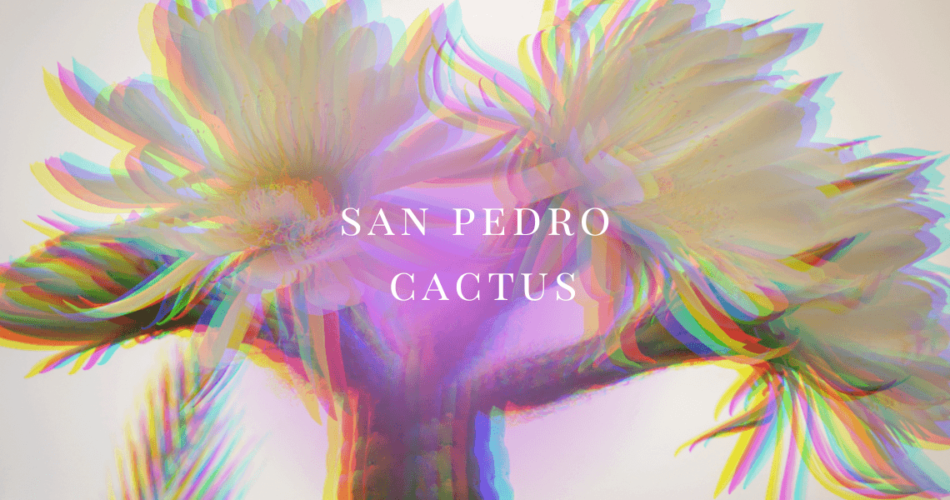Things to remember!
- The San Pedro Cactus, native to the Andes Mountains, is a unique, columnar cactus species with yellow spines and white flowers. ✨
- It contains the psychoactive alkaloid mescaline, inducing fascinating subjective effects. ✨
- San Pedro has a deep-rooted religious usage in Peru, Ecuador, and Bolivia. ✨
- Tripping on San Pedro is a kaleidoscope of visuals and deep introspection. ✨
- Its legality varies. It is legal to cultivate it for ornamental reasons, but it is illegal to extract mescaline from it. ✨
- Compared to the Peruvian Torch and Peyote, San Pedro is gentler and less “out of the world.” ✨
- Cultivating San Pedro can be an adventure in itself! ✨
Echinopsis Pachanoi: What Is This Cactus?
The San Pedro cactus, scientifically named Echinopsis pachanoi, hails from the lofty Andes mountains. This dark green, columnar cactus, a part of the Trichocereus genus, is an ornamental beauty reaching skyward, often growing to a towering 20 feet. Blooming with fragrant, white flowers in summer, it’s a stunning sight to behold. Despite its spiny exterior, the San Pedro cactus has a softer side, playing a key role in Andean traditions due to its rich alkaloid content. But that’s a story for another section.
San Pedro Cactus and Mescaline
You see, our spiky friend isn’t just a pretty face. The San Pedro cactus contains mescaline, a potent psychoactive alkaloid. This chemical compound is responsible for the cactus’ psychedelic properties, creating a unique spiritual experience known as “San Pedro use.” Mescaline triggers a flood of subjective effects, giving rise to a multi-sensory experience that’s both hallucinogenic and introspective. Unlike psilocybin, mescaline-induced trips can last longer and often include vivid, kaleidoscopic visuals.
Trivia ✨
Other names for the San Pedro cactus (especially popular in South America) are: Huachuca, Aguacolla, and Giganton.
The Religious Use of San Pedro
For over 3000 years, indigenous tribes in Peru, Ecuador, and Bolivia have used San Pedro in religious rituals. Revered as a “materia prima,” or primary material, its psychedelic properties were believed to bridge the gap between the earthly and the divine.
This cactus’ spiritual legacy continues today in various forms, from traditional Andean ceremonies to contemporary neo-shamanic practices. Here’s a trivia tidbit for you: San Pedro was named by Christian missionaries who believed the cactus could grant an entrance to heaven!
San Pedro Experience
Embarking on a San Pedro journey is like stepping into a cosmic elevator with a mind of its own. The ride involves rich visual hallucinations – imagine your world painted in vivid, undulating colors and patterns. These aren’t just any visuals; they’re windows into your subconscious, leading to profound introspection and self-awareness.
The thoughts that surface are often deep, tackling the corners of your psyche you might not explore otherwise. Every trip is a unique narrative shaped by your mindset, environment, and the dose. Remember, this isn’t a casual joyride. Safety and preparation are key.

The Legality of Echinopsis Pachanoi in the U.S.
In the U.S., the San Pedro cactus itself is legal and often used ornamentally. However, it gets tricky when we bring mescaline into the mix. The extraction, possession, or consumption of mescaline is prohibited under federal law (Schedule I drug), making it a gray area. So, while you may cultivate this beautiful cactus in your backyard, extracting mescaline for that psychedelic journey is a no-go. It might end with several years in prison!
San Pedro Cactus Compared to Peruvian Torch and Peyote
San Pedro holds its own in the cacti tripping community, often compared to its psychedelic siblings, the Peruvian Torch Cactus and Peyote. While all three contain mescaline, the concentration, and the subjective experiences differ. San Pedro is often considered gentler, with less intense visuals compared to Peyote. Meanwhile, the Peruvian Torch Cactus delivers a more sedative effect. No matter the choice, each offers a unique trip down the rabbit hole.
Cultivating San Pedro: A Psychedelic Gardening Adventure
Gardening and psychedelics? You bet! Cultivating your San Pedro cactus can be a rewarding experience. While it needs patience, seeing your cactus sprout is like witnessing a psychedelic baby’s growth. Opt for well-draining soil and plenty of sunlight. Remember, overwatering is a cardinal sin in cactus cultivation.
So, that’s the San Pedro Cactus in a nutshell! Next time you see this spiky friend, you’ll know the stories it whispers. Safe travels, fellow trippers!
Prickly Questions and Answers
Is San Pedro Cactus Hard to Grow?
No, the San Pedro cactus is not particularly hard to grow. It’s actually considered one of the easiest cactus species to cultivate, especially for beginners! They prefer well-draining soil and lots of sunlight. Just remember not to overwater – it’s a common mistake that can lead to root rot.
How Long Does San Pedro Cactus Trip Last?
The effects of the mescaline contained within the cactus can start to be felt anywhere from 20 minutes to 2 hours after consumption, and the total trip duration typically ranges from 8 to 15 hours.
Are San Pedro Ceremonies Different than Peyote?
Yes, San Pedro and Peyote ceremonies have unique characteristics, primarily due to their cultural differences. On the other hand, Peyote ceremonies are deeply embedded in Native American cultures, particularly the Native American Church. The cactus buttons are often consumed directly, and the ceremony can include singing, drumming, and prayer. The intent of both ceremonies is similar – to facilitate spiritual growth and healing – but their practices differ based on the cultural contexts.
Similar Posts:
- Is San Pedro Cactus Legal? The Legality of Echinopsis Pachanoi
- The Marvel of Echinopsis Peruviana: Meet the Peruvian Torch Cactus, San Pedro and Peyote’s Mescaline Cactus Cousin
- Mescaline vs Peyote Cactus: A Short Comparison
- Is Peyote Legal? Can You Cultivate It? | The Legal Status of Peyote
- Mescaline vs. LSD – Let’s Compare These Popular Hallucinogens
- San Pedro Cactus Psychedelic Effects. What You Need to Know
- How Much Is Peyote Worth? Cactus Controversial?

